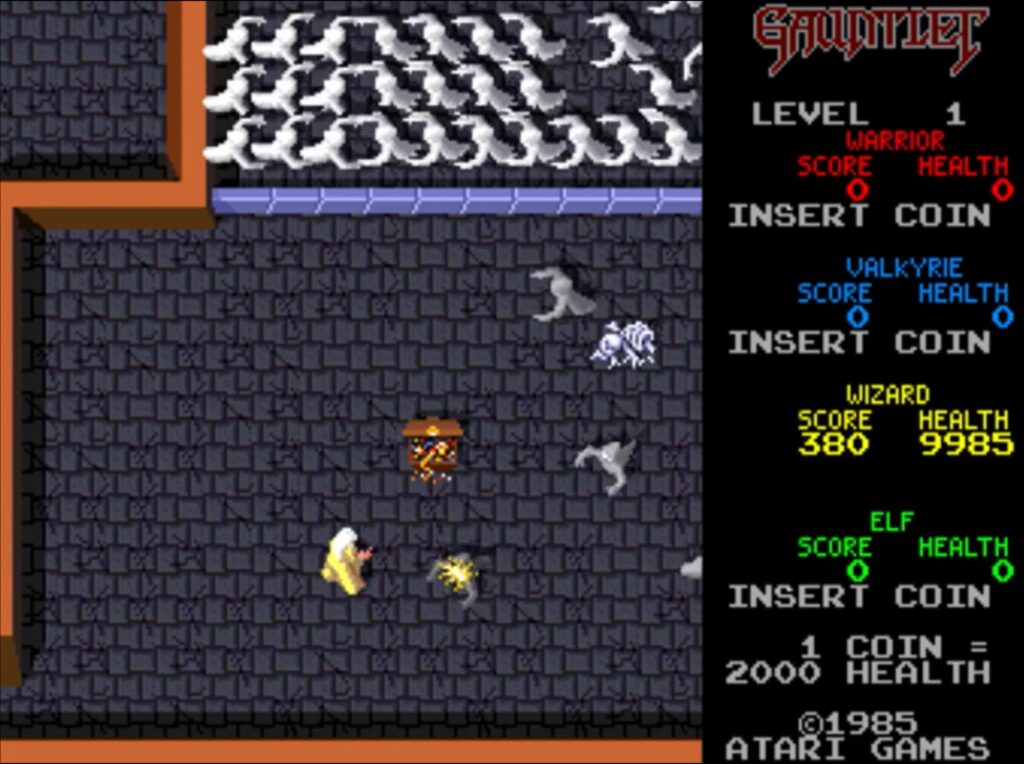Strategies and Partnerships: Exploring Co-op Play in Classic Arcade Titles
During the 1970s arcades were filled with the sounds and lights of the first generation of video games. Most of these early games were single-player experiences and It wasn’t until the late 1970s that developers started experimenting with multiplayer functionalities, including cooperative play. One of the earliest examples of a co-op game was “Fire Truck” (1978), developed by Atari. It was a unique game where two players had to cooperatively drive a fire truck, with one controlling the front and the other the rear of the vehicle. This game set the stage for cooperative gameplay, emphasizing teamwork and shared objectives.

The 1980s are often referred to as the Golden Age of arcade games, and it was during this time that co-op play truly began to flourish. The early 80s popularised two player games that allowed players to either compete against each other or co-operate. Released in 1980, “Wizard of Wor” was a maze-based shooter where two players could either compete against each other or team up to navigate through various dungeons filled with monsters. In cooperative mode, players needed to strategize together to efficiently clear each level while avoiding friendly fire.
Another significant early co-op game was “Joust,” released by Williams Electronics in 1982. Two players controlled knights riding flying ostriches, with the objective of defeating enemy knights riding buzzards. While players could choose to compete against each other, the game also encouraged cooperative play to survive against the increasing number of enemies. The unique flight mechanics and the cooperative strategy of “Joust” made it a memorable and influential title in the arcade co-op genre.
The introduction of games like Gauntlet (1985) and Double Dragon(1987) went on to revolutionize the co-op arcade experience. Gauntlet was a dungeon crawler that allowed four players to play simultaneously, each taking on different character classes. This game introduced the concept of different roles and abilities in a cooperative setting, enhancing the strategic depth of co-op gameplay. Double Dragon, on the other hand, was a beat ’em up game that allowed two players to fight side-by-side against a horde of enemies. It introduced a narrative element to co-op play, as players worked together to rescue a kidnapped character. This game was significant for integrating a story into the co-op experience, making it more immersive and engaging.
The 1990s saw further advancements in co-op arcade gaming, with improved graphics and more complex gameplay mechanics. Titles like “Teenage Mutant Ninja Turtles: The Arcade Game” (1989) and “The Simpsons Arcade Game” (1991) became immensely popular, often featuring four-player cooperative play. These games were notable for their use of popular culture and media franchises, which helped to draw in a wider audience. They also introduced more varied and dynamic gameplay mechanics, making co-op play more exciting and challenging.
One of the most ambitious, and arguably the pinnacle of, co-op arcade games was “X-Men” released in 1992. This game was famous for its large, double-screen cabinet, which allowed up to six players to play simultaneously. Players could choose from popular X-Men characters, each with unique powers. The game’s success was partly due to its use of a well-known comic book franchise, but also because it offered an expansive multiplayer experience that was rare at the time. It fostered a sense of teamwork, as players combined their characters’ abilities to battle through levels filled with enemies and bosses.
The legacy of co-op play in arcade games is still felt today. Modern games often incorporate cooperative elements, drawing inspiration from the arcade classics. The emphasis on teamwork, shared objectives, and social interaction that characterized arcade co-op games continues to influence game design and player experiences. The resurgence of retro gaming and the popularity of arcade bars have brought classic co-op arcade games back into the spotlight. This renewed interest celebrates the history and social aspect of these games, reminding us of the simple joy of playing together.
From the early experiments in the 1970s to the Golden Age of the 1980s and beyond, cooperative play in arcades evolved to become a defining feature of the gaming experience. It fostered a sense of teamwork, camaraderie, and shared fun that continues to influence the gaming world. It’s clear that co-op play was more than just a game mechanic; it was, and still is, a way of bringing people together.


